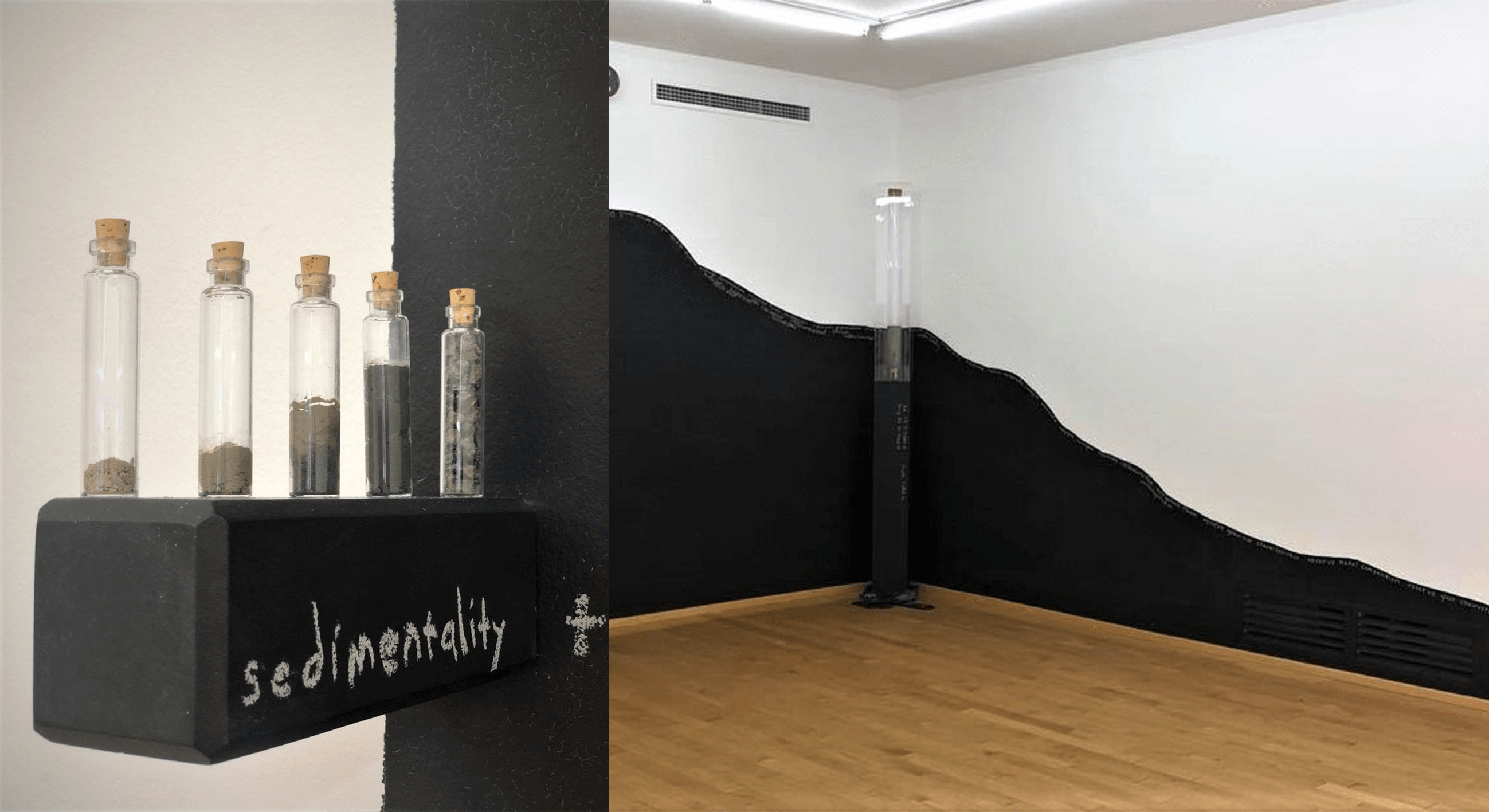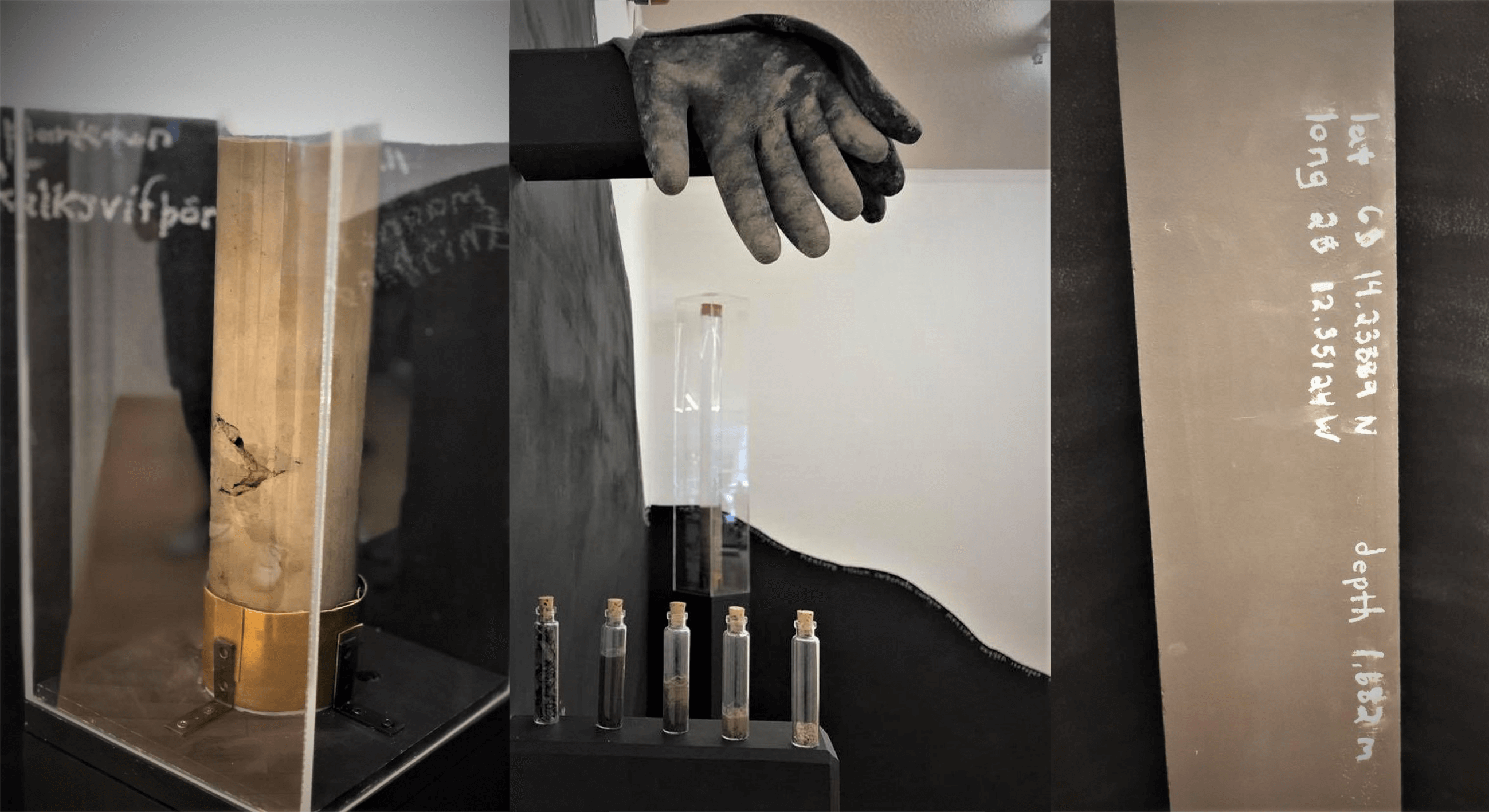From ocean bed to art gallery

ROCS postdoc Angela Rawlings participated in the exhibition Community of Sentient Beings which opened late August at the art gallery Hafnarborg in Reykjavík. Her installation "kór" (core) features a Rumohr core sourced during a ROCS cruise in June this year. A team of ROCS postdocs and researchers from GEUS, Aarhus University, and NIVA joined the cruise led by Professor Katherine Richardson, not to mention the captain and crew of the HAFRÓ research vessel Árni Friðriksson.
The cruise’s overarching goal was to extract sediment cores for eDNA analysis as well as water samples from the contemporary ocean to map ecosystem structure and processes in relation to climate-relevant variables. Yet, the cruise would move beyond such goals in various inspiring ways as exemplified so well by Angela Rawling’s moving installation.

As Angela describes her installation and discusses the concept behind her work:
You can learn more about the post docs at ROCS by going to video.ku.dk and look for the ROCS channel or follow the center on Instagram https://www.instagram.com/rocs_oceanclimatesociety/
Two walls, intersecting at a 90-degree angle, present a recto-verso spread in a book. These walls-as-pages display an unfolding story of deep-ocean sense-making between community makers. At the point where the walls intersect is a sediment core which houses deep ocean floor and seawater. At the left-hand margin of the wall-as-page, a vertical column of three samples—lava from Geldingadalur, work gloves, and sediment samples—are displayed.
The first source is my libretto-in-progress, also called kór, which tracks my own experience of deep-ocean sense-making during the June 2021 research trip.
The sediment core was extracted June 2021 from the Denmark Strait (between Greenland and Iceland) at a depth of 1,745m. The core is a vertical transparent cylinder with rubber stoppers. On the left wall, there are five sediment samples from other locations northwest and south of Iceland in glass vials, the work gloves I used when working with the gravity corer (the gloves are still covered in silt and mud that is at least 12,000 years old and possibly up to 125,000 years old), and Geldingadalur lava (two days old at acquisition) which represents the mantle plume.
The walls are painted entirely black to communicate the lack of light in the deep ocean. On the lower part of both walls, a layer of chalkboard paint slopes in a trajectory that mirrors the actual seafloor where the sediment core was extracted. This chalkboard aligns exactly where the seafloor is within the actual sediment core, providing an extended wall space where the community stories of relating to deep ocean and deep time are inscribed throughout the installation.
On the chalkboard (which mirrors the seafloor), text is written in brown chalk. The selection of this writing material and surface evokes classroom learning as well as multi-authored impermanence. Chalk itself is a sedimentary carbonate rock—limestone formed through the compression of plankton that have fallen to the ocean floor. The familiar chalk of childhood is directly confronted with its in-process source—deep-sea sediment in the constant practice of becoming.
The text written in chalk comes from two sources. The first source is my libretto-in-progress, also called kór, which tracks my own experience of deep-ocean sense-making during the June 2021 research trip. On that research trip, I had the pleasure to learn from and learn with sailors (from Hafrannsóknastofnun crew) and physical scientists (geophysics, sedimentology, macroecology, earth systems sciences, paleobotany, marine biology) as we took ocean water samples and deep-ocean sediment cores. The libretto reflects the stories that have emerged from direct contact with deep time.
The second source of the text comes from a performative element of the installation. Gallery attendees are invited/instructed to engage with the installation by adding their words, thoughts, languages to the installation. I anticipate that this may invoke sense-making, narrative, and affective response in multiple languages which would layer onto the libretto text. I am also interested by the ephemeral nature of such collaboration, anticipating the potential of erasure to occur (where evidence or residue of a past story comes in the form of chalk dust). Rather than a passive viewing of a work, my desire is to offer the installation as a point of activation, where community members are invited to contribute, to think with, to create in the context of considering the sentient being-ness of sediment. Brown chalk is provided for this purpose.
This story will be followed by a cruise recap published on this website during the following weeks.
You are also welcome to follow us on Instagram: rocs_oceanclimatesociety and Twitter: @ROCS_Centre for news about ROCS’s activities and research.
